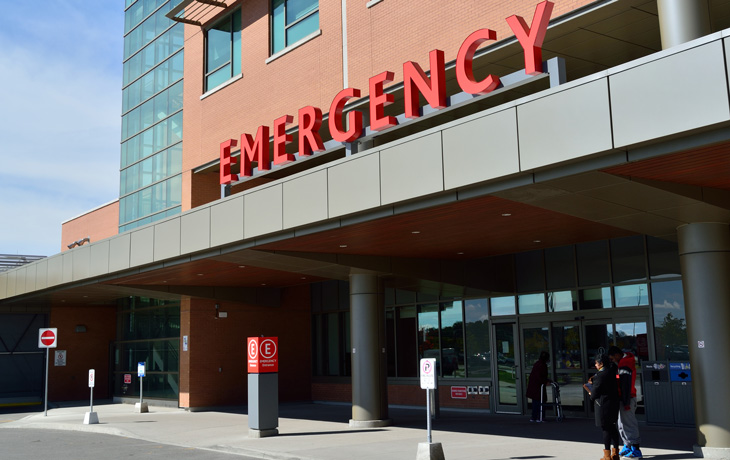In December 2021, United States Surgeon General Vivek Murthy warned the public of alarming increases in the prevalence of certain mental health challenges among children, teenagers, and young adults. Now, a new analysis from UC Berkeley and UC San Francisco tracks how this crisis—which grew over the past decade and was exacerbated by the COVID-19 pandemic—trickled its way into emergency medicine departments across the United States.

A new study published today in JAMA Network Open shows that despite a pandemic-related decline in the overall number of emergency room (ER) visits during 2020 and 2021, a higher-than-normal proportion of children between the ages of 12 and 17 were seen in the ER for mental health-related care.
“People might have been afraid to seek help at the start of the pandemic,” explained lead author Sofia Villas-Boas, a professor in the Department of Agricultural & Resource Economics (ARE) at UC Berkeley, “but once it became safe to do so, we saw that children and teenagers were more willing or had a higher need to seek emergency care for mental health reasons than other groups.”
The researchers used data from the National Syndromic Surveillance Program administered by the Centers for Disease Control and Prevention to determine the number of overall and mental health-related ER visits between 2019 and 2021. Visits are reported weekly for each of the 10 U.S. Department of Health and Human Services regions and cover 71 percent of ERs across the U.S.
During 2019, an average of 9.3 percent of children reported in the dataset were attended to by ER personnel for either an acute mental health crisis or presented mental health conditions during their visit. That percentage peaked to nearly 15 percent nearly six weeks after the pandemic was first declared—a more than 50 percent increase compared to the pre-pandemic average—and remained elevated until the middle of 2021.
Co-author Renee Hsia, MD, a professor and associate chair of health services research in the Department of Emergency Medicine at UCSF, noted that in recent years, the number of children in crisis who have mental or behavioral health needs has sometimes exceeded what her emergency department is able to treat.
“This points to resource shortages in both inpatient and outpatient mental health care,” she said. “Patients may need longer-term specialized care, which sometimes requires weeks waiting for an open bed in another county."
The number of overall and mental health-related ER visits for adults over the age of 18 also dipped at the start of the pandemic. But unlike children, adults seeking mental health-related care did not return to ERs at a higher-than-normal rate. “We believe this disconnect shows an acuteness of need or maybe even a lack of mental health care alternatives for adolescent children,” Villas-Boas said.
According to Hsia, the data could offer policymakers and mental health professionals insight into allocating future resources and funding for mental health services—particularly during public health emergencies. In her view, ERs often function as a “safety net of the healthcare system” as they are required by law to treat any patient who walks through their doors.
“Because of this, our patients’ needs may be a reflection of unmet medical, social, and psychological conditions,” she said. “In the case of this study, it is possible that mental health resources were unable to keep up with the well-documented increase in adolescent mental health crises during the pandemic, and patients sought help in the emergency room as a last resort.”
Additional co-authors include Justin White, professor of health economics at UCSF, and Scott Kaplan (PhD ’21 ARE), a professor of economics at the United States Naval Academy.
Read more
